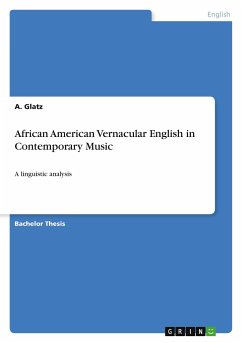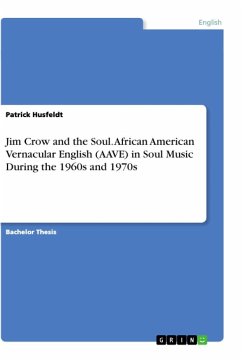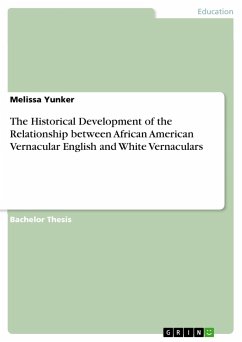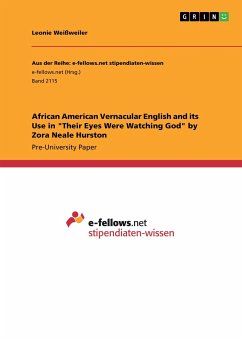Seminar paper from the year 2009 in the subject English Language and Literature Studies - Linguistics, grade: 1,3, Dresden Technical University (Anglistik/Amerikanistik), course: Seminar "Syntactic Patterns in English", language: English, abstract: Imagine an English lesson in a fifth grade somewhere in the USA. The class consistsof 25 pupils - ten of them are noticeably of African descent. The white teacher givesinstructions to the pupils, wanting them to write an imaginative story about a topic oftheir own choice. A black boy in the last row raises his arm, asking: "So there ain't norestriction at all?" The teacher - visibly annoyed by the pupil's interrogation - shoutsin his direction: "I don't want no double negation in your texts!"Although this story arose from my imagination, this little anecdote directly leads me tothe topic of this paper: Negation in African American Vernacular English (AAVE).The situation described above might seem funny - especially because the teacheruses double negation in his answer himself - but its content appears to be sad realityfor millions of black students all over the United States of America:White teachers do not accept 'Black Talk' as a proper language to be used in officialinstitutions like schools but tend to call its speech patterns and expressions - thathave been proved by many linguists in the past decades to be part of an own scientificallyaccepted language system - orthographically and grammatically wrong.AsGeneva Smitherman states it in the preface of her book "Talking That Talk" (2000):It [is] obvious that despite decades of research and scholarly work on Ebonics, thereare still large numbers of people who do not accept the scientific facts about thislanguage spoken by millions of Americans of African descent.1Since this is the case I became interested in the specific features that make AAVE sodistinctive from other varieties of English. During my researches I found one grammaticalphenomenon that might not be completely unique to AAVE but which containsa variety of smaller distinctive features, namely the field of negative construc-tions in AAVE. In this paper I want to investigate the various grammatical phenomena related to ne-gation in the African American vernacular. Since grammar always becomes a more lively and joyful thing to look at when it is explained with the help of examples from real life conversations or other authentic speaking situations I decided to use lyrics of Rap music written and performed by Afro-American Hip Hop artists Eric B., Rakim, Tupac Shakur and his Hip Hop group Thug Life to illustrate the grammatical rules and features discussed in this paper.[...]








